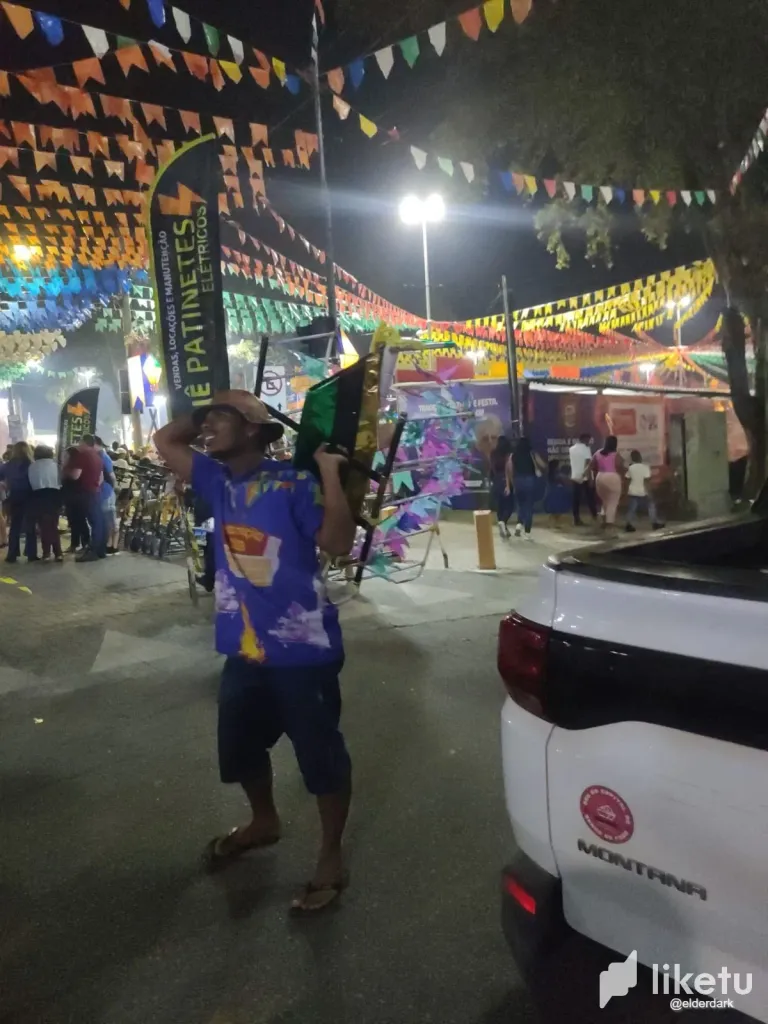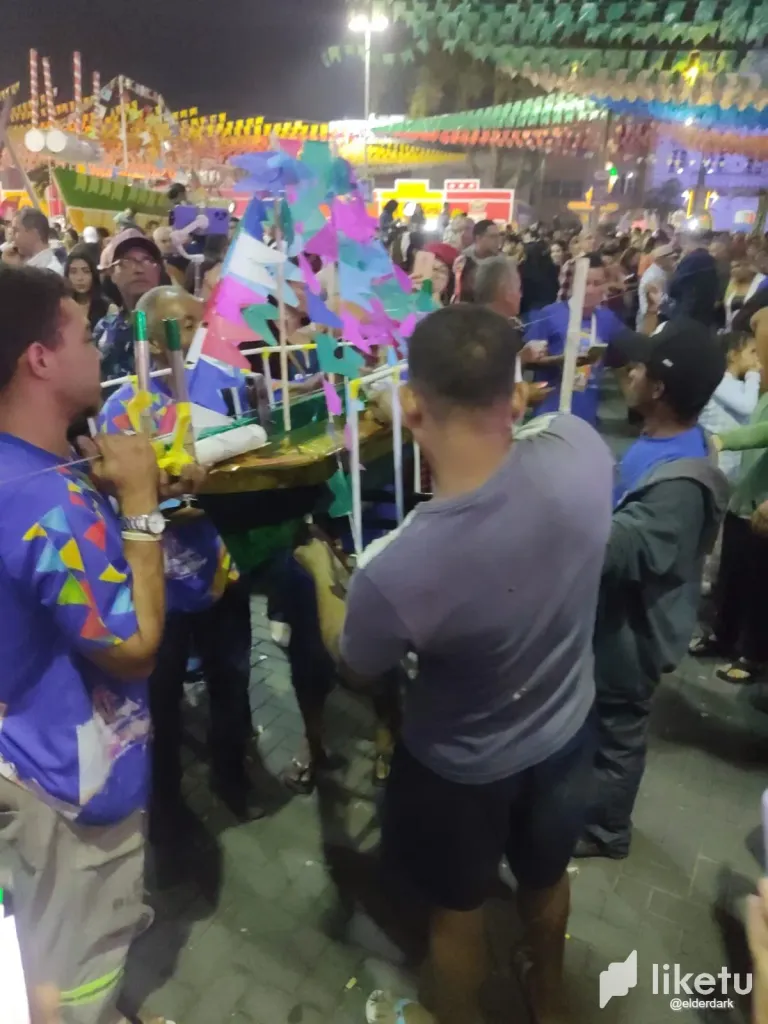[EN/PT] Capital of the Fire Boat





[EN]
This weekend, we went to the city center, where traditional June events take place throughout the month. As is common throughout northeastern Brazil, the São João period is marked by traditional foods, music such as forró, and various types of fireworks, such as busca-pé, espada, and, of course, the famous barco de fogo.
This is undoubtedly the most exciting month for Northeasterners—and, for many, the most anticipated of the year. It seems as if the atmosphere is transformed: the streets become colorful, people are filled with joy and energy, and parties spread to every corner, driven by city governments that hire renowned bands and artists to perform for free to the public. Although funded with public resources, these events are a way to keep tradition alive and value popular culture.
This Sunday, my wife and I went to see one of the region's greatest cultural spectacles up close: the fire boat. This genuinely Estancian invention is a source of pride for the city of Estância, in the state of Sergipe, which rightly bears the title of “Capital of the Fire Boat.”
The fire boat is a handmade artifact built with a metal structure in the shape of a boat, filled with fireworks—especially swords, another typical type of local rocket. When lit, it travels along cables stretched between poles or elevated structures, sliding quickly at high speed, while releasing sparks, colors, and explosions of light. It is a true show of handmade pyrotechnics, made with great care and technique by the so-called “boatmen,” specialists who have kept this tradition alive for generations.
There was a crowd in the city center, all gathered to watch the burning of the fire boat. I managed to capture some incredible moments: from the preparation of the barqueiros to the boat crossing the skies with its spectacle of lights, colors, and sounds. It is an experience that mixes emotion, tradition, and cultural identity.
I hope these images and this account convey some of the beauty and importance of this ranch tradition, which is undoubtedly one of the greatest symbols of São João in Sergipe and the Northeast.
[PT]
Neste final de semana, fomos ao centro da cidade, onde, durante todo o mês de junho, acontecem os tradicionais eventos juninos. Como é comum em todo o Nordeste brasileiro, o período do São João é marcado por comidas típicas, músicas como o forró, além de diversos tipos de fogos de artifício, como o busca-pé, a espada e, claro, o famoso barco de fogo.
Este é, sem dúvida, o mês mais animado para os nordestinos — e, para muitos, o mais esperado do ano. Parece até que o ambiente se transforma: as ruas ganham cor, as pessoas se enchem de alegria e energia, e as festas se espalham por todos os cantos, impulsionadas pelas prefeituras que contratam bandas e artistas renomados para se apresentarem gratuitamente ao público. Apesar de custeados com recursos públicos, esses eventos são uma forma de manter viva a tradição e valorizar a cultura popular.
Neste domingo, eu e minha esposa fomos conferir de perto um dos maiores espetáculos culturais da região: o barco de fogo. Essa invenção genuinamente estanciana é motivo de orgulho para a cidade de Estância, no estado de Sergipe, que leva com justiça o título de “Capital do Barco de Fogo”.
O barco de fogo é um artefato artesanal construído com uma estrutura metálica em formato de barco, recheado de fogos de artifício — especialmente as espadas, outro tipo típico de foguete local. Ao ser aceso, ele percorre cabos esticados entre postes ou estruturas elevadas, deslizando rapidamente em alta velocidade, enquanto solta faíscas, cores e explosões de luz. É um verdadeiro show de pirotecnia artesanal, feito com muito cuidado e técnica pelos chamados "barqueiros", especialistas que mantêm essa tradição viva há gerações.
Havia uma multidão no centro da cidade, todos reunidos para assistir à queima do barco de fogo. Consegui registrar alguns momentos incríveis: desde a preparação dos barqueiros até o barco cruzando os céus com seu espetáculo de luzes, cores e sons. É uma experiência que mistura emoção, tradição e identidade cultural.
Espero que essas imagens e esse relato consigam transmitir um pouco da beleza e da importância dessa tradição estanciana, que é, sem dúvida, um dos maiores símbolos do São João sergipano e nordestino.
For the best experience view this post on Liketu

You can check out this post and your own profile on the map. Be part of the Worldmappin Community and join our Discord Channel to get in touch with other travelers, ask questions or just be updated on our latest features.
Obrigado por promover a comunidade Hive-BR em suas postagens.
Vamos seguir fortalecendo a Hive